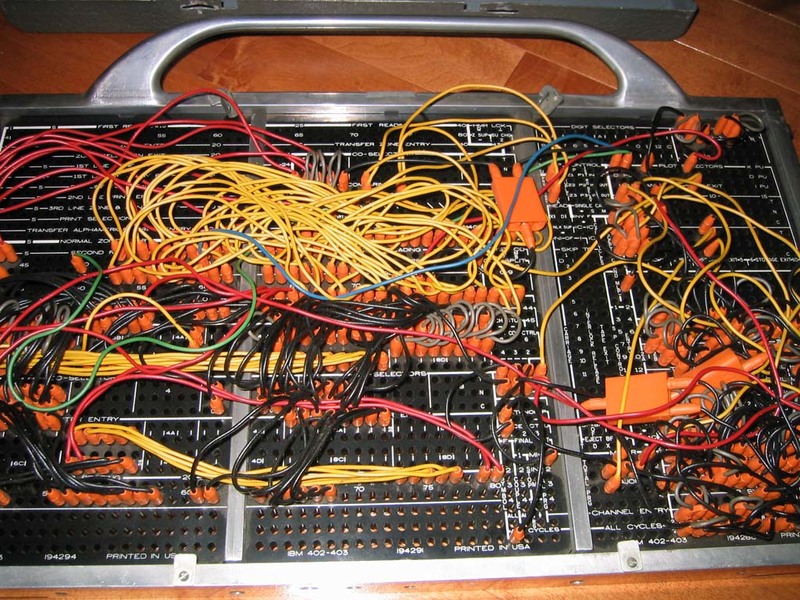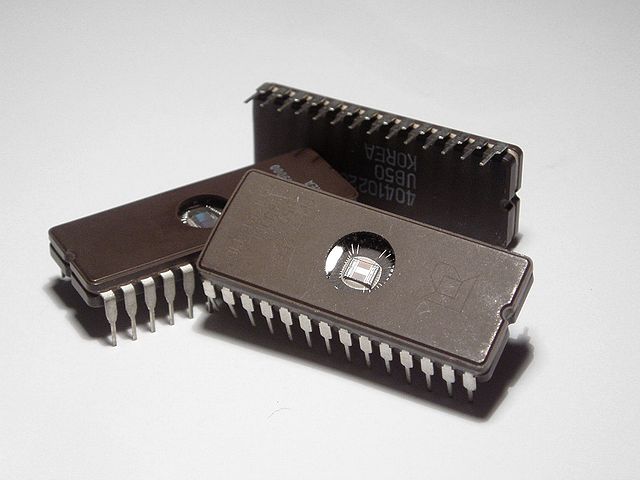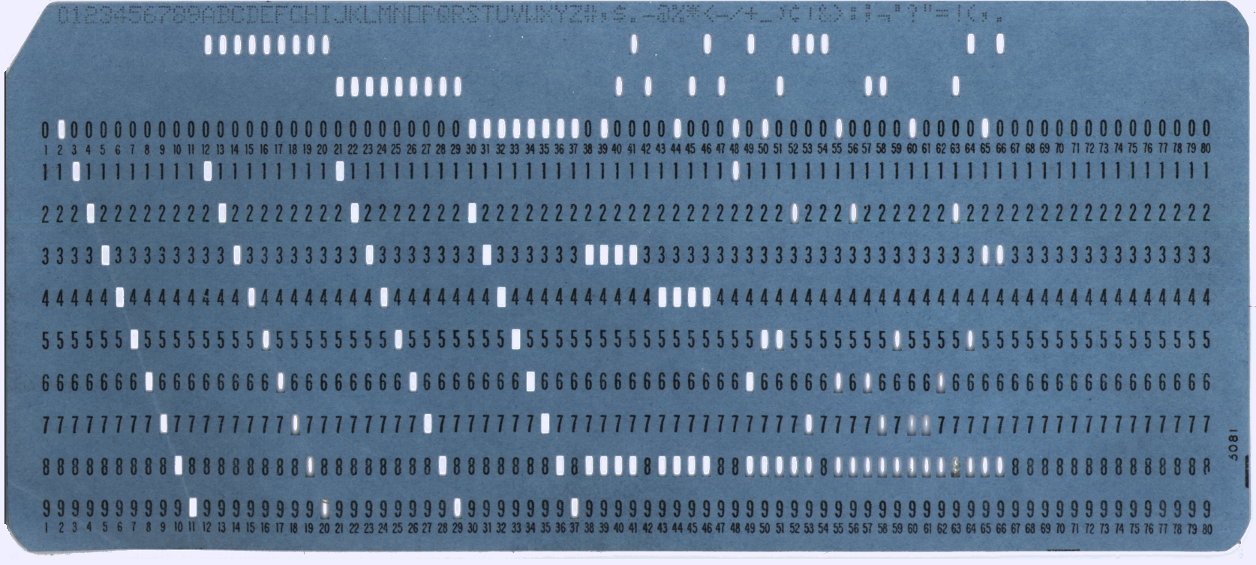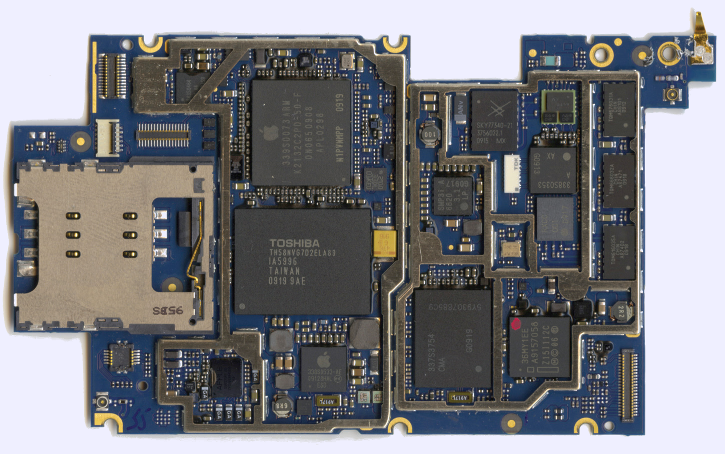- Developments.
- Digital information:
Just information represented by numbers.
- People have used digital information pretty much forever; using machines to manipulate them is new.
- First production use of machines for numbers.
- Herman Hollerith
- 1890 census.
- Card reader not considered a computer: No program.
- Stored-Program Computers.
- Data equipment is much more useful when it can be programmed to
perform different functions.
 Photo: Chris Shrigley. CCL
Photo: Chris Shrigley. CCL - Earliest versions used plugs. (Pictured is for an IBM 402 Card Tabulator.)
- Stored-program computers keep the program in memory.
- Changing programs is much faster.
- Still large and expensive machines.
- Data equipment is much more useful when it can be programmed to
perform different functions.
- Transistors.
- Early computers used vacuum tubes.
- Heated, using lots of power.
- Routinely burn out.
- Large (light-bulb size).
- Transistor invented in 1947.
- Can operate at room temperature.
- Long life span.
- Smaller.
First commercial ones are the size of a pencil eraser.
- Early computers used vacuum tubes.
- Integrated circuits.
- Discrete transistors must be connected to build larger circuits.
- This takes time, and connections can break.
- ICs are constructed from many connected transistors at once.
- The transistors and their connections are all created in a single operation.
- Process, photolithography, is similar to printing.
- First ICs contained tens of transistors.
- Current microprocessors contain millions.
 Photo: Richard Wheeler. GFDL
Photo: Richard Wheeler. GFDL - Personal computers.
- Early computers were big, expensive shared corporate resources.
- Advance of IC technology made then shrink from a room to a desktop, then to a pocket.
- And lowered the price.
- The Internet.
- Early networks connected computers of the same type.
- ARPANET, first run in 1969, connected computers of different types.
- Originally used for text connections and file transfer.
- The World-Wide Web.
- Tim Berners-Lee.
- A way to make the web more usable.
- Originally designed to speed up the sharing of physics research.
- Layered Software.
- Software is organized in layers.
- Each layer provides services to the layer above.
- Layers
- Applications.
- Word processors, web browsers, games.
- On phones, conventional to say “apps”.
- Libraries and utilities.
- Programmer's reusable parts.
- Display an open-file dialog, request a web page from a server, search for a specified user in the accounts database.
- Kernel.
- Interface between hardware and software.
- Create a file, report mouse movements or screen touches, place a block of data onto the network.
- Hardware
- Applications.

- Digital information:
Just information represented by numbers.
- Hardware
- A processor, which follows the program and runs the machine.
- Most PCs use some form of the Pentium from Intel.
- Many phones use an ARM processor, made by various manufacturers.
- A memory which holds program and data.
- Various connected peripheral devices.

- A processor, which follows the program and runs the machine.
- Software
- The collective terms for program.
- An algorithm is a precise, systematic method for producing a specified
result.
Think long division - A program is an algorithm expressed in a language the processor understands.
- You need to know the right words.
- Talking to tech support.
- Anchoring knowledge -- experts invent words for a reason.
- Words for Ideas
- Abstract: Extract the fundamental idea.
- The moral to the story: Does the Prodigal Son need a name?
- If something is a “hardware store” what do you know about it?
- Generalize: Find similarities to summarize multiple things.
- Bolts, faucets, jar lids, volume controls: Same directions.
- Spelling rules: I before E...
- Allows us to apply experience from one area in another.
- Operationally Attuned: If you know how something works, you can figure out how to use it.
- Mnemonic: A rule to remind you.
- Empty Garbage Before Dad Flips. (Notes)
- Gentiles Eat Pork Chops. (Galatians, Ephesians, Philippians, Colossians)
- Righty Tighty, Lefty Loosy.
- Abstract: Extract the fundamental idea.
Video: kids
react to old computers.